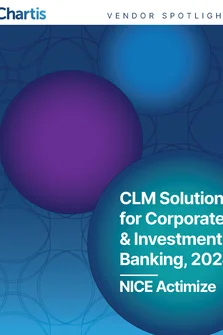<p>In recent years financial institutions (FIs) have been the subject of dramatic increases in fines for regulatory violations imposed by an ever-growing array of authorities.</p>
<p>As such, FIs need to be prepared to be scrutinized by the regulators in every country and region in which they have a presence. The most stringent compliance demands are occurring in the US, from the twin prongs of both federal and state regulators. The UK has been the second largest collector of fines. In addition, FIs are attempting to keep track of the intersections between political and regulatory risks – for example, trade sanctions in Russia and China, where regulation often shifts into high gear for geo-political reasons. This is engendering an environment in which all players in financial services, from the largest (countries) to the smallest (individual customers of FIs) are finding themselves under increased scrutiny.</p>
<p>However, FIs should ensure that they are not looking at financial crime from a solely regulatory perspective. With the rise of online and mobile transactions, FIs have sizable new challenges in preventing fraud and theft targeted at both themselves and their customers. The automation, anonymization and dissemination of information technology has opened the door to large numbers of potential fraudsters. This leads both to high- frequency low-cost losses, and to low-frequency but high-cost losses. FIs are facing a new breed of criminal who is familiar with their systems and structures, and can exploit them at multiple points. Meanwhile, financial crime risk management (FCRM) solutions are still largely rules-based and constructed around data silos.</p>
<p><strong>The market for financial crime risk management solutions includes:</strong></p>
<ul>
<li>Anti-money laundering (AML)</li>
<li>Know-your-customer (KYC)</li>
<li>Sanctions and watch-list monitoring</li>
<li>Counter fraud (first and third party)</li>
<li>Trade surveillance</li>
<li>Cyber-security</li>
</ul>
<p>These disciplines, at varying stages of maturity, are often integrated into specific risk management functions such as compliance, operational risk, credit risk, reputational risk and conduct risk. Institutions should decide whether to:</p>
<ul>
<li>Patch the holes in their financial crime risk management systems by using point solutions; or</li>
<li>Invest in a more integrated enterprise financial crime risk management platform.</li>
</ul>
<p><strong>Financial crime risk management systems require transparency: </strong>Regulators are no longer satisfied with black box solutions for financial crime risk management. They want to see evidence that the systems actually work, can be demonstrated and explained, and can prove they don’t discriminate based on demographics or other prohibited factors. Model risk management and model governance are an important part of these requirements for greater transparency.</p>
<p><strong>Customer-focused FCRM solutions can provide business value: </strong>Increased confidence in their financial crime risk management systems has allowed FIs to raise limits while reducing false positives. They can invest in their customers with a greater degree of trust, and in turn generate more confidence from both their customers and investors.</p>
<p><strong>Additional sources of information and intelligence are proving their worth:</strong> Multi-layered security, fraud and AML defenses such as geolocation, open source intelligence (OSINT) and social network analysis are providing new sources of information for building comprehensive views of customers and counterparties.</p>
<p><strong>With integration of risk and compliance becoming more important, FIs are looking to align their FCRM systems.</strong> The costs of breaking silos and data cleansing are proving prohibitive for most FIs. Many, especially the largest, with the most complex legacy systems, are using middleware, alignment, overlays and data abstraction layers to ameliorate costs and complexity.</p>
<p>This report describes the demand-side and supply-side of the market for FCRM systems. Chapter 3 is based on Chartis’s collaboration with EY and presents the latest thought leadership on tackling financial crime through integrated risk and compliance. This report also includes the results of the 2014 global financial crime survey conducted by Chartis, which included responses from over 100 financial institutions, interviews with risk and compliance professionals, briefings with vendors, and roundtable discussions with leading domain experts and practitioners.</p>
<p>This report uses Chartis’s RiskTech Quadrants<sup>®</sup> to explain the vendor landscape. The RiskTech Quadrant<sup>®</sup> uses a comprehensive methodology of in-depth independent research and a clear scoring system to explain which technology solutions meet an organization’s needs.</p>
<p>This report presents four separate RiskTech Quadrants:</p>
<ul>
<li>Enterprise fraud technology</li>
<li>AML and transaction monitoring</li>
<li>KYC and client on-boarding</li>
<li>Watch list monitoring</li>
</ul>
<p>This report covers the following vendors offering financial crime risk management solutions for financial institutions, including 3i Infotech, Accuity (now acquired by Reed Elsevier), ACI Worldwide, Alaric, BAE Systems Applied Intelligence, Catelas, EastNets, Entrust, FICO, Fircosoft (now acquired by Reed Elsevier), FIS Global, Fiserv, iDETECT, Intellinx, NICE Actimize, Oracle, RSA, SAS, SBS, TCS, Thomson Reuters, Tonbeller, Vadis, VERAFIN, Wolters Kluwer, and Wynyard.</p>
Only users who have a paid subscription or are part of a corporate subscription are able to print or copy content.
To access these options, along with all other subscription benefits, please contact info@risk.net or view our subscription options here: http://subscriptions.risk.net/subscribe
You are currently unable to print this content. Please contact info@chartis-research.com to find out more.
You are currently unable to copy this content. Please contact info@chartis-research.com to find out more.
Copyright Infopro Digital Limited. All rights reserved.
As outlined in our terms and conditions, https://www.infopro-digital.com/terms-and-conditions/subscriptions/ (point 2.4), printing is limited to a single copy.
If you would like to purchase additional rights please email info@chartis-research.com
Copyright Infopro Digital Limited. All rights reserved.
You may share this content using our article tools. As outlined in our terms and conditions, https://www.infopro-digital.com/terms-and-conditions/subscriptions/ (clause 2.4), an Authorised User may only make one copy of the materials for their own personal use. You must also comply with the restrictions in clause 2.5.
If you would like to purchase additional rights please email info@chartis-research.com


